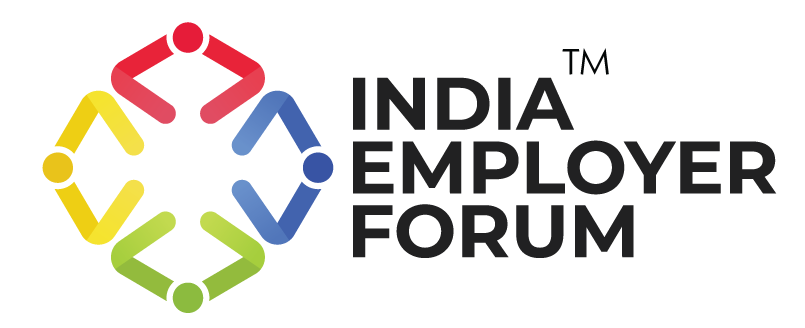Let’s unravel how layoffs are reshaping industries, skills, and hiring strategies worldwide
As we move into the second half of 2025, the global labor market finds itself at a pivotal moment. Layoffs continue to reverberate across industries, regions, and company sizes, fueled by a complex mix of cost pressures, strategic realignments, and the rapid pace of technological transformation. While India is navigating its own unique economic landscape, it is far from insulated from these global shifts. Allianz’s Chief Economist, Ludovic Subran, noted, “Having seen an increase in the insolvencies of large firms, there is now a bit of a domino effect on the suppliers, so a lot more small and medium-sized enterprise insolvencies are expected in 2025” . This article analyzes layoff trends across major global industries from January to May 2025 and explores how these shifts are shaping employment in both international markets and India.
Tech Layoff 2025: A Shift from Expansion to Efficiency
The technology sector remains one of the hardest hit, not because of the crisis, but due to a fundamental change in growth strategy. Once characterized by aggressive hiring, especially during the pandemic boom, tech companies are now prioritizing leaner teams and high-impact innovation. Microsoft initiated its second-largest workforce reduction ever, cutting 7,000 jobs globally—around 3% of its staff—as it restructures management layers and focuses heavily on AI-led growth areas. Meta followed suit, eliminating 3,600 roles (~5%) with CEO Mark Zuckerberg emphasizing performance-based exits to raise internal standards. Google, meanwhile, streamlined its cloud and HR functions early in Q1 to align with a sharpened focus on enterprise AI. These strategic reductions illustrate a shift from headcount-heavy expansion to a model that values cross-functional efficiency and AI-first innovation. This is the new norm in tech: doing more with fewer, better-aligned teams.
Automotive: Adapting to Demand Shifts and Operational Inefficiencies
The automotive industry is undergoing a painful transformation as it confronts declining global demand and legacy inefficiencies. Nissan announced over 10,000 job cuts in 2025 alone, raising its total workforce reduction to nearly 20,000 globally—amounting to 15% of its total headcount. The company is battling operational challenges in key markets and struggling to maintain competitiveness as consumer preferences shift toward electric vehicles and shared mobility. These layoffs underscore the broader industry push to transition from traditional combustion-engine models to future-ready platforms, all while grappling with rising production costs, geopolitical instability, and evolving regulatory pressures.
Retail: Luxury Brands Under Pressure
Even traditionally resilient segments like luxury retail have not been spared. British fashion house Burberry revealed plans to eliminate 20% of its global workforce in an effort to turn around stagnating growth. The high-end fashion sector is contending with falling discretionary spending, changing customer behavior, and rising operational costs. Layoffs in this space are often tied to rebranding efforts, downsizing physical retail presence, and re-investment in digital and influencer-led marketing strategies. Job cuts in this sector are part of a shift from physical retail to influencer-led digital engagement, with brands redirecting capital toward e-commerce platforms and virtual campaigns.
Financial Services: Digital Transformation Reduces Headcount
The financial sector is undergoing a major transformation driven by digitization and automation. Banks and financial institutions are cutting jobs not due to profitability losses, but because of strategic pivots toward AI, fintech, and decentralized finance. In 2025, Deutsche Bank announced plans to cut 2,000 jobs as part of a €300 million cost-saving initiative, focusing on reducing management layers and integrating teams for greater efficiency . Similarly, HSBC is closing its international payments app Zing, potentially leading to around 400 job losses, and initiating a new round of job cuts in its investment bank, with layoffs expected to begin in Asia and extend globally. These changes reflect a sector-wide recalibration away from traditional banking roles, with digital-first functions taking precedence.
Media and Entertainment: Traditional Models Disrupted
The media and entertainment industry is undergoing a quiet restructuring. In 2024, nearly 15,000 media jobs were eliminated, reflecting structural challenges faced by publishers, including declining advertising revenues and shifts in consumer behavior . In 2025, CBS News laid off three high-level staff members amid growing turmoil at its parent company, Paramount Global, which is under financial strain and preparing for broader cuts ahead of an $8 billion merger with Skydance . Similarly, Disney is laying off about 6% of its employees in its ABC News Group and Disney Entertainment Networks units, as part of a shift towards streaming and cost-saving measures . These layoffs reflect the ongoing transformation in the media industry, where traditional models are being disrupted by digital-first strategies and changing consumer preferences.
India’s Employment Shift: Strategic Cuts in Startups and IT
While India’s labor market has historically shown resilience—thanks to structural buffers like a dominant informal sector and strong family-run enterprises—2025 is proving to be an inflection point. Even sectors once seen as stable or ascendant, like tech startups and IT services, are experiencing noticeable contraction.
In the startup ecosystem, a shift from hyper-growth to fiscal discipline is driving job reductions. For instance, social media company ShareChat laid off 5% of its workforce (around 30–40 employees), citing the need to focus more aggressively on monetization and operational sustainability. Similarly, Pocket FM, an audio storytelling platform, cut 75 employees in a restructuring effort aimed at streamlining costs. These cuts reflect a continued contraction in the Indian startup space, which saw over 28,000 layoffs in 2023 and has reported an additional 6,500 layoffs between January and April 2025. This trend indicates the tightening of funding from venture capitalists who are now pushing profitability as a core expectation.
India’s IT services sector, long considered a bastion of employment stability, is also trimming its ranks. Major firms such as Infosys and HCLTech have reportedly reduced headcount by a combined 10,000 roles in early 2025. The slowdown is attributed to weakening export demand from Western markets and increased adoption of automation and AI tools, which are beginning to replace routine and back-end functions.
Takeaways for Job Seekers and Employers
- AI is the catalyst: From cloud computing to code generation, roles with lower complexity or redundancy are being reassessed across the board.
- Performance pressure is real: Companies like Meta have shifted toward aggressive performance filtering, a trend others are emulating.
- Hiring isn’t frozen—just different: While traditional roles are disappearing, demand for AI, data science, and sustainability-linked skills is growing steadily.
- Upskilling is no longer optional: Adaptability and digital literacy are becoming as important as domain expertise.
The Road Ahead: Adapting to a Redefined Labour Landscape
The first five months of 2025 have confirmed what many had anticipated: this is not just a phase of workforce correction, but a structural reset in how companies across the globe and in India manage talent. From Silicon Valley to Bengaluru, organizations are trimming excess, prioritizing automation, and recalibrating for efficiency and resilience.
Globally, the shift is being driven by AI adoption, strategic cost-cutting, and evolving business models. In India, the pressures are more nuanced with greater focus on profitability, funding constraints, and the steady encroachment of automation into white-collar IT roles. While the scale and speed of layoffs may differ, the direction of travel is unmistakably the same.
Whether this signals a more fragmented, performance-based employment model or simply a recalibration after years of overexpansion, one truth is clear: resilience, reinvention, and relevance are now essential for workers and companies alike. As the labor market continues to evolve, those who adapt—not just react—will define the next phase of economic and employment stability.






